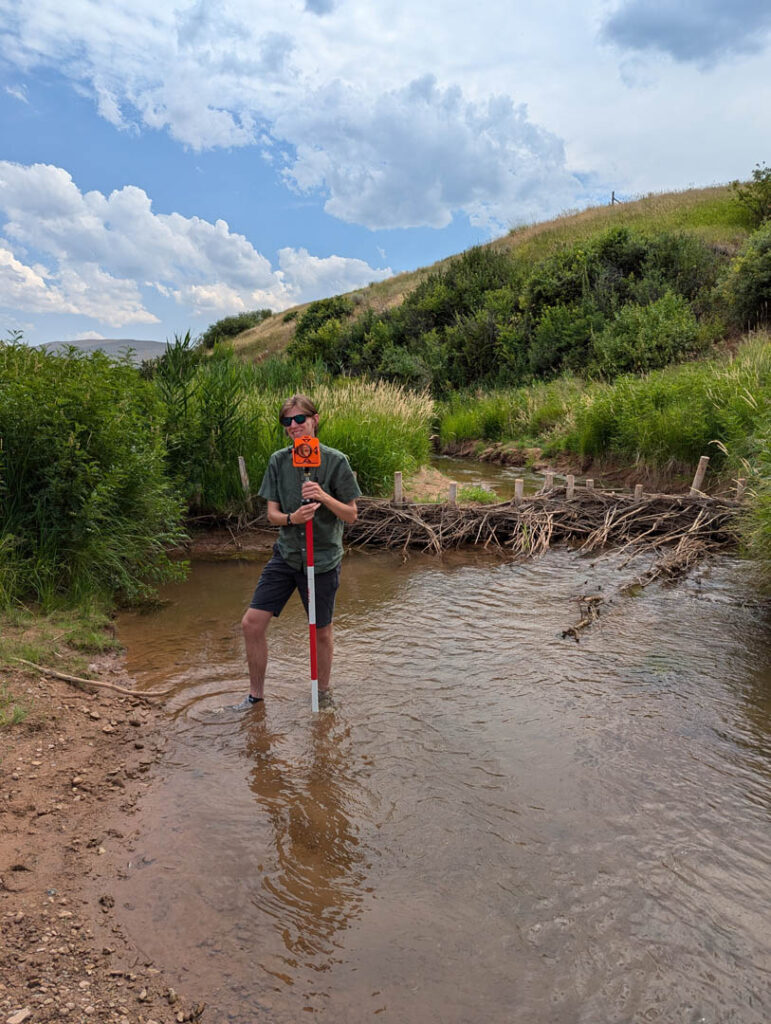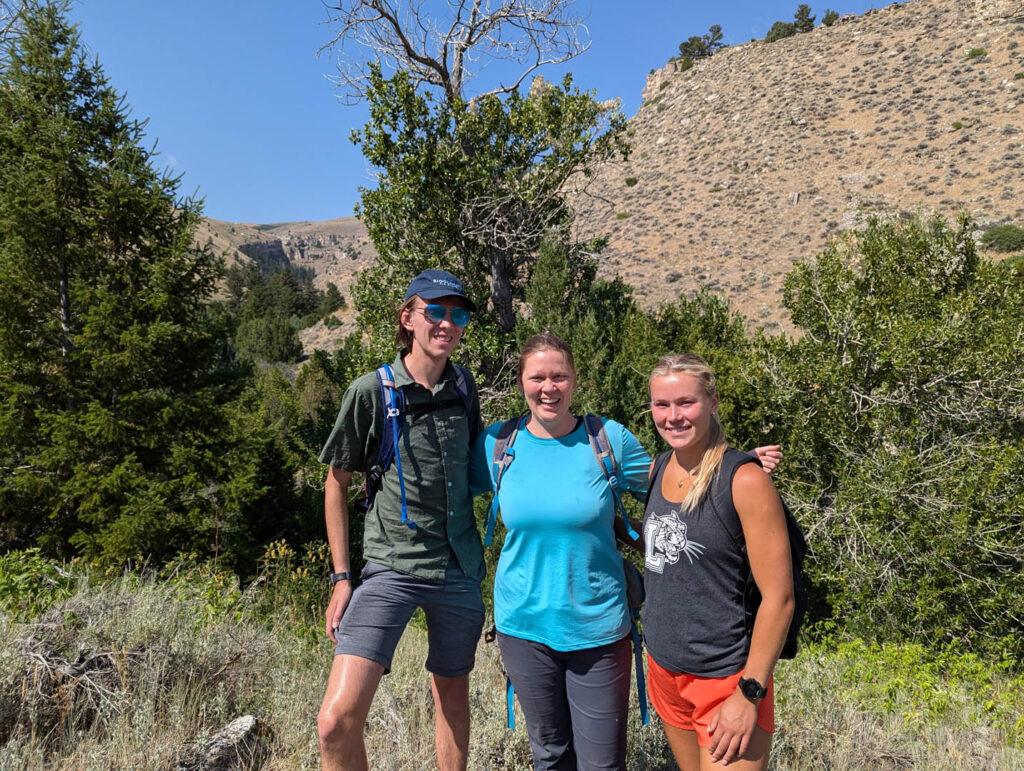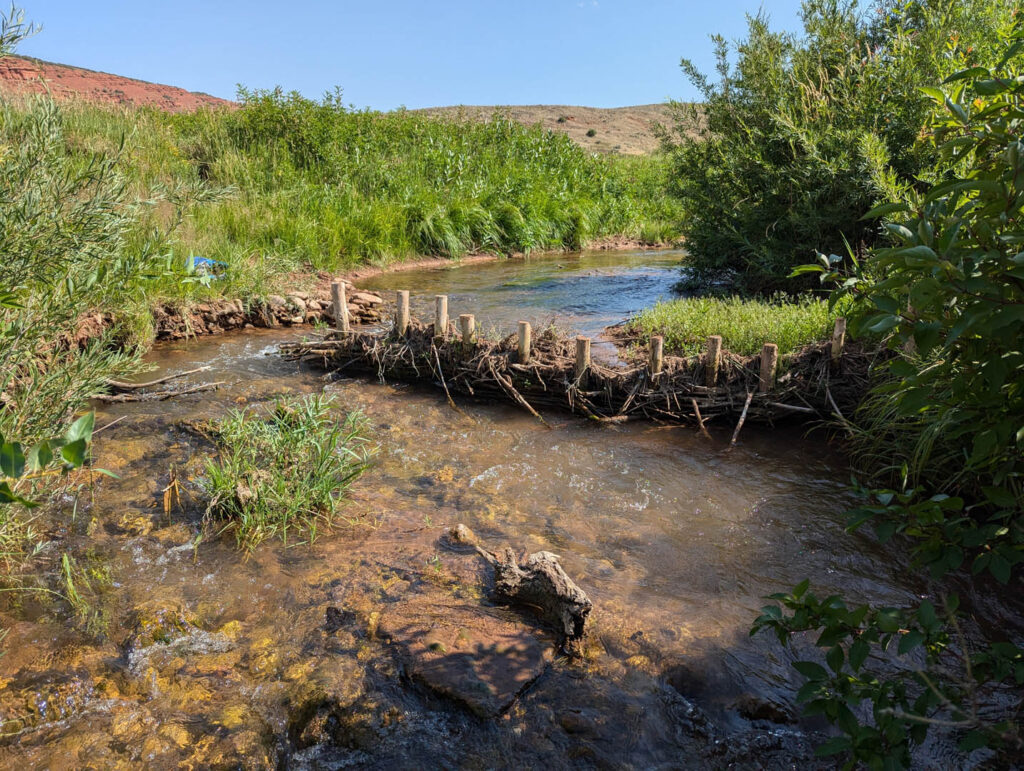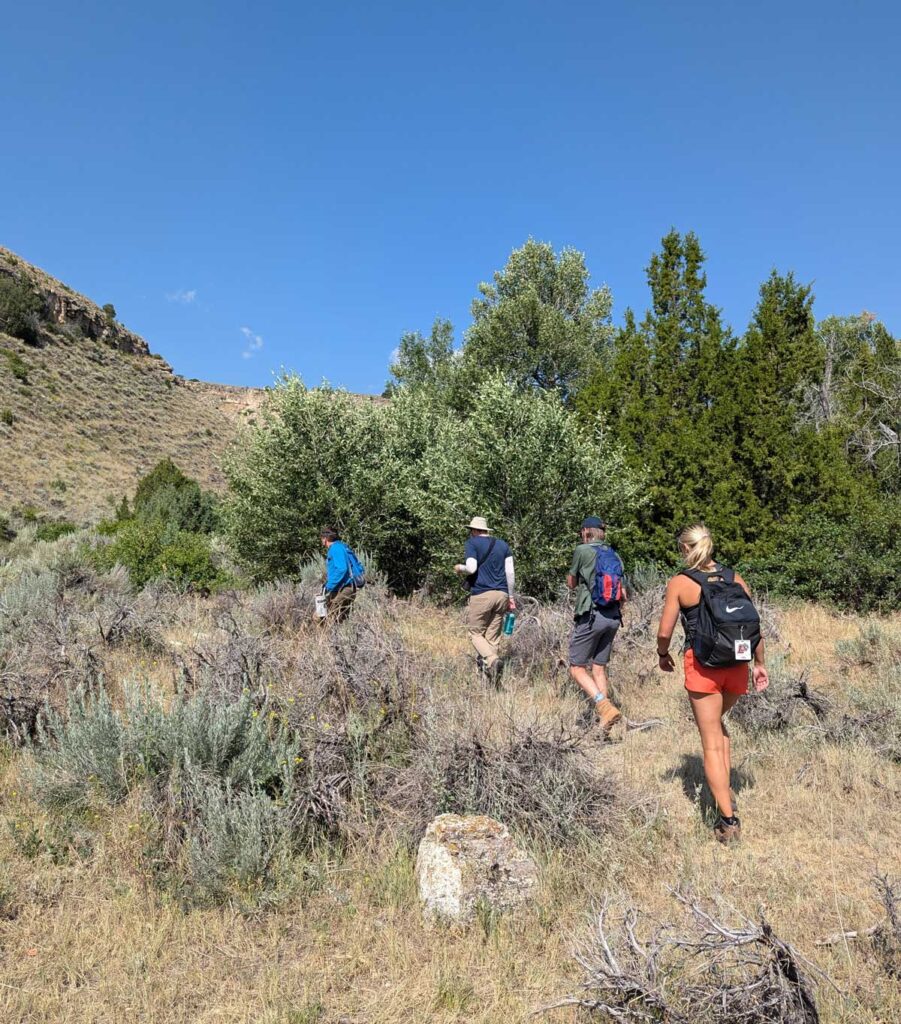A natural fit
Prof. Christa Kelleher ’08 and students travel to Wyoming to study artificial beaver dams.
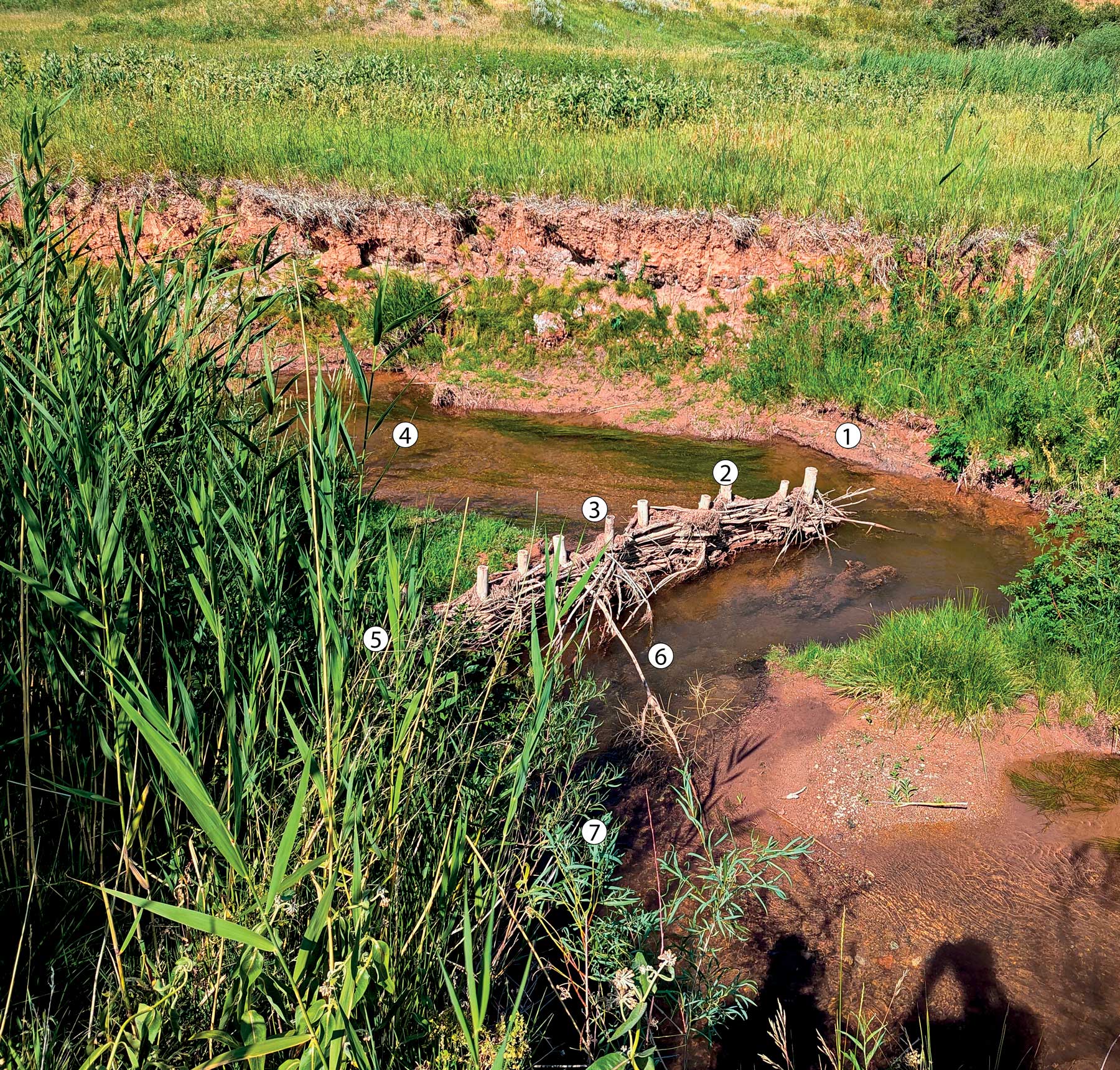
Photographs By Christa Kelleher
With their instinctual drive to build dams, hardworking beavers have earned their reputation as nature’s engineers. Their habitats are important for wetlands, as they naturally alleviate flooding, filter water, and help to control soil erosion. Hydrologist Christa Kelleher ’08, assistant professor of civil and environmental engineering, has a deep respect for these creatures and just how beneficial they are.
“Growing up in the western U.S., I’ve always had an appreciation for the importance of water,” Kelleher says. “This has been a dream project to work with The Nature Conservancy and bring Lafayette students to such a beautiful place to observe restoration in action.”
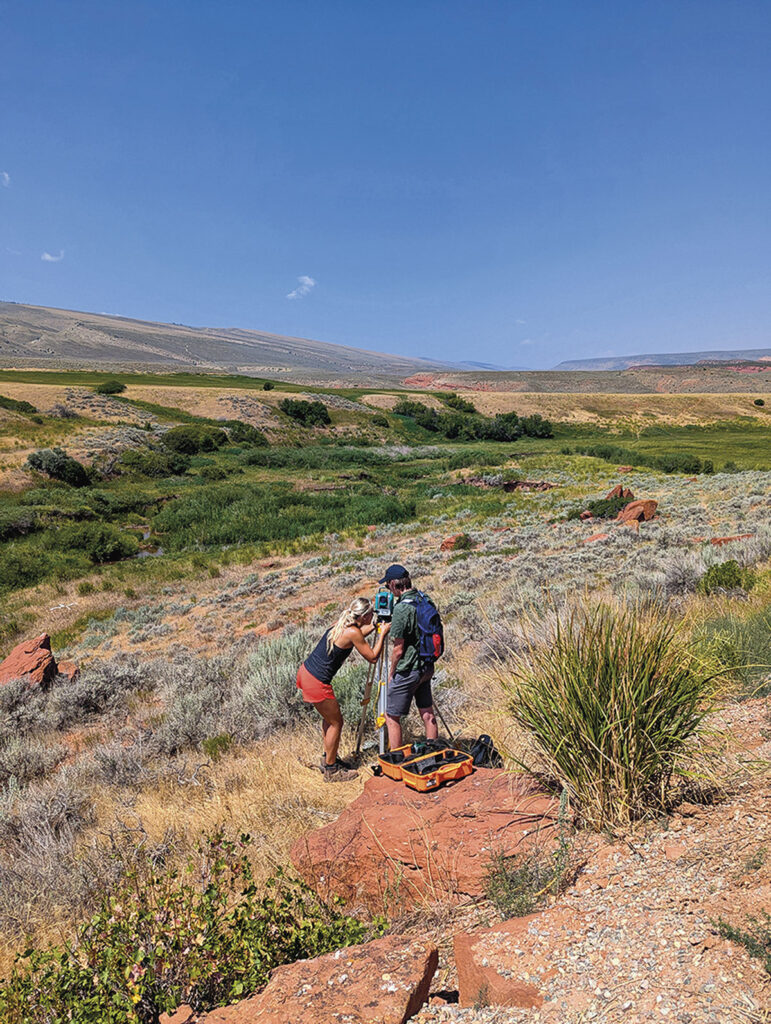
Since 2017, through her National Science Foundation-backed research, Kelleher has studied how artificial beaver dam analogs, or BDAs, can be used to improve water resources in the dry western United States, where beaver populations have declined due to human pressures. (This material is based upon work supported by the NSF under Award No. 2208396.)
This summer, assisted by drones and surveying equipment, Kelleher traveled to the 5,000-acre Red Canyon Ranch in central Wyoming, where nearly 50 BDAs have been installed in its Red Canyon Creek since 2018. Students Sara Tippin’25 and William Blair ’26, both civil and environmental engineering majors, joined her on the trip to help study the effectiveness of these man-made dams.
Their daily work involved hiking to the BDAs to take photos of changes, surveying the streambeds, and setting up control points for drone imagery.
Together they found that these BDAs are enhancing plant and animal diversity, supporting livestock grazing, and demonstrating how ranching and conservation can cohabitate.
1.
The Lafayette group set up various control points for drone imagery to capture the changes to stream channels.
2.
The dams—made of the same natural materials that a beaver might choose—are typically built by driving wooden posts into the streambed. These posts are then woven with branch cuttings, including willow.
3.
Like beaver dams, the structures are packed with local sediment (i.e., cobble, gravel, and sand) on their upstream end to prevent scouring at the base.
4.
The group hiked to the beaver dam analogs to photograph water changes upstream and downstream of the structures. Low permeability slows the stream flow, which raises the local water table to grow ponds and improve willow thickets for beavers. Slowed sediment can also lead to deposition upstream—and help to reduce erosion.
5.
A series of artificial dams will make a greater impact. Some BDAs will be contained within the river while others can extend into the riverbanks.
6.
BDAs are temporary: Unless adopted by a beaver, they will eventually break down.
7.
Benefits of BDAs take time: Results will start showing within one to three years after installation. Kelleher hopes to return to the ranch within the next couple of years to observe further changes to
the stream and floodplain.
“They’re really worried about water availability out here,” Blair says. “Part of this question is, if we sort of mimic the beaver dam, can we bring water back to the landscape, can we keep more water on the landscape?”
Tippin observes that many BDAs have been installed throughout the West, but no one has really been tracking how they’re affecting streams.
“They’re just kind of being put in, with the hope that they will help restore the streams,” she says. “But no one’s really checking up on them, seeing how they’re affecting stream characteristics. That’s what our job is this summer: seeing how they’re affecting streams and water quality.”
Tippin and Blair agree their summer research experience is something that sets Lafayette apart.
“Because of Prof. Kelleher and her research, we’re getting to work outdoors, with people from other universities, the Nature Conservancy, and even drone experts,” Blair says. “Spending an entire summer doing field research really enhances our classroom experience and broadens our understanding of this topic in a meaningful way. I don’t think you would get this somewhere else.”
Kelleher relishes the opportunity to provide these kinds of rich learning experiences.
“One of my joys at Lafayette is getting students to take what I teach them in surveying and practicing it out in this beautiful place,” she says. “Students get to see firsthand why this research matters and how it improves our understanding of stream restoration and hydrology.”

